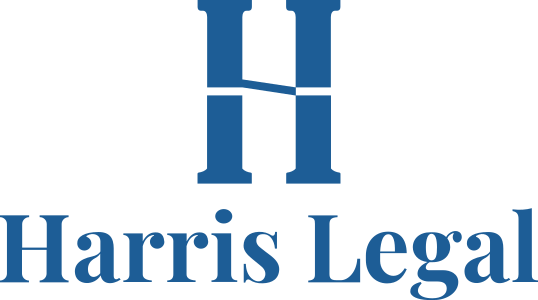Year Zero: How Harris Legal Prepared to Launch
The seeds of what is now Harris Legal, PLLC, were planted and nurtured long before we officially opened for business. I’m excited to kick off a series of blog posts that will provide a behind-the-scenes look at this firm, from the extensive groundwork laid before the launch to the exciting innovations and developments that are shaping our future moving forward. I hope that this series of posts will be helpful to other young lawyers who are investigating what it looks like to start their own practice.
My Approach to Business Planning
Instead of jumping straight into drafting an elaborate business plan following some template I found online—I started by doing nothing more than making a list of questions. On a long car ride, my wife took out her laptop and we wrote down every question we could think of that needed to be answered. We covered everything from the broad “What type of law am I going to practice?” to the specific “What pens will I buy?”
The open road, away from the usual distractions, provided the perfect environment for this type of brainstorming. The goal was simply to come up with the questions, without needing to determine the answers just yet, offering us the flexibility to think creatively without the pressure of immediate solutions. This laid a solid foundation for our business planning process. After we had all the questions out of our minds and onto paper, I started to slowly research, determine, and write down the answers. With each response, my confidence grew and the answers, collectively, started to turn into a business plan. After all, that’s what a business plan is, really, a document that answers the key questions for your business.
Looking for the Right Name
One of the earliest and most crucial decisions I encountered during the set-up process was choosing the right name for the firm. Given that I was launching solo, without a partner, this decision largely rested on my shoulders.
I initially toyed with the idea of a trade name for the firm, something along the lines of “Camel City Lawyers”. (That one isn’t taken, by the way, and if you use it after reading this, I expect a bottle of something in return). However, after much consideration, I realized I preferred the traditional naming structure. The use of a trade name did have its advantages, such as broad appeal and branding opportunities, but it didn’t quite convey the personal dedication and commitment that using my name could. However, I also didn’t want to go with the standard “The Law Offices of Zachary Harris”.
So I started making another giant list—this time of the different name options. Once I had a list, I went to the Secretary of State’s website to ensure the names we were considering weren’t already in use by any other businesses. “Harris Legal” was recently used by another lawyer, but she dissolved her practice a couple years ago and the name was available again. After this initial screening, I then turned to a domain tool to cross-check the remaining names against available domain names for our future website. The objective was to ensure that the firm’s branding would align closely with the website URL for seamless identification and recall. While it wasn’t a perfect match—since the ideal URL I had in mind was already taken—I managed to strike a comfortable balance.
While the naming process may seem minor in the grand scheme of starting a firm, it was an important first step towards establishing our identity—it is surprising how much more “real” the business became once it had a name.
Choosing the Right Tools
Many of the questions in the business plan dealt with what tools the firm would use. Many practices use a single case management software that includes all the necessary, and many unnecessary, features. From what I’ve seen, most of these systems do most things fine, a few things great, and a couple things horribly. Instead, I decided to find the best tools for each individual task and link them together using connectors and APIs. By choosing all of my tools during the planning stage, I was able to jump right in when the firm launched—without needing to figure those details out while I was also trying to obtain and serve clients.
At the moment, Harris Legal uses the Microsoft suite and Teams for documents, email, and internal note taking and communication. PowerAutomate serves as the backbone of much of the automation used. Todoist is used for task management; Toggl is used for time tracking; and Quickbooks is used for everything finance.
Embracing Technology and Automation
One area where I knew Harris Legal would have a competitive edge was the realm of technology and automation. I envisioned a complex, purpose-built system that would automate much of the litigation process that is routine and rule-based—freeing more time for the creative thinking of lawyering.
Then, AI showed up in a big way. When generative AI became mainstream, it was clear that it had the potential to outperform and out-innovate the automation systems I had in mind. This realization was initially disheartening; the cutting-edge vision I had was obsolete before it was even built.
However, instead of succumbing to this wave of change, I chose to ride it. I realized that AI is still in its infancy in terms of its usage in the legal profession and is going to wildly change how law firms operate. I’m not yet using AI in the actual practice of law, as there are still too many mistakes and ethical issues in doing so, but it has been useful in many non-legal tasks: AI created the initial draft of the Harris Legal logo and color scheme. AI has played a huge role in creating our marketing materials, including this article, providing me with a distinct competitive advantage that few law firms of Harris Legal’s size have capitalized on.
Financial Planning: Break-Even Analysis
The capstone of my business plan was a break-even analysis. Basically, given the expenses I was projecting combined with my necessary salary, how much would the firm need to generate in the first year to make it to the second year (of course, we’re aiming for better than just “make it to the next year”).
The first step was to assess my family’s necessary expenses, putting aside any luxury items or vacations. How much did we need to maintain our standard of living? We also wanted to make sure that we could keep the commitments my wife and I made to support various charities. Once I had that information, I calculated how much of my family’s expenses were paid by my salary. Essentially, if my salary were removed from the equation, how much more would we need each month, based on my wife’s salary, to get us back to our desired standard of living? I projected this over a span of 12 months, which told us how much money we would need to live for a year. Then, we saved enough money that my practice could earn $0 for six months, without impacting our standard of living.
However, this still left another six months wherein my family would need to be supported, at least in part, by this new practice in addition to the overhead costs of running the practice. I needed to find out how much income I would need to generate in that first year to cover these needs. This calculation was slightly more complicated as it involved estimating what the tax rate and self-employment taxes would be, and then working backward to calculate the pre-tax draws I would need to take. Once I had that number, I added it to the expenses and boom—I knew what I would need to earn in the first year to “break even” after paying myself.
The break-even analysis helped me in two significant ways. First, it gave me a clear financial target to aim for as I transitioned to my new venture. Second, I realized that the goal was attainable, which greatly helped calm my nerves.
Conquering Fears and Self-Doubt
I would be remiss if I didn’t talk about nerves. The first step on any journey is often the most daunting, and starting my own firm was no exception. Fear, uncertainty, and self-doubt were constantly in the back of my mind during the initial stages of planning. I worried that I was naïve and that I would take this step and my phone would never ring. I was also worried about what others—my friends, family, and colleagues—would think of this decision. Would they understand? Would they approve?
These thoughts threatened to overwhelm me and even made me second guess (and third guess, fourth guess, fifth guess, etc.) my decision. I had to intentionally shift my focus away from seeking approval from others to nurturing self-belief. This was a bet I was placing on myself and my abilities, and it was crucial to stay focused on that. As followers of Christ, my wife and I spent much time in prayer over this decision as well. These prayers and the support and approval of my family, friends, and the few other lawyers with whom I shared my plans played a significant role in strengthening my resolve. I was reassured knowing that they were behind me and believed I could succeed.
Conclusion
Starting Harris Legal, PLLC, was a journey that challenged me, demanded strategic planning, and boosted my confidence—it is by far the largest project I have ever worked on. For any aspiring lawyer thinking of starting their own firm, I hope that my story can help you as your consider making this leap as well. Thanks for reading.
What to Do If You Think Your Doctor Has Made a Mistake

What Does it Mean to Hire a Lawyer On a Contingency Fee?

How to Choose the Right Personal Injury Lawyer: A North Carolinian’s Guide

Rule 9(j): The Gatekeeper of Medical Malpractice Cases in North Carolina

The Power of Resolve in Personal Injury Cases: The Value and Risks of Going to Trial

Expired Registration and Car Accidents in North Carolina: What You Need to Know

Is a Car Accident a Crime in North Carolina?

Bitten by a Dog in North Carolina? Here’s How to Bring a Successful Dog Bite Claim in North Carolina

Can you make a car accident claim without a police report?

Buckle Up: Navigating North Carolina State Health Plan Liens

